#VMU stands for Virtual Memory Unit
Explore tagged Tumblr posts
Text
So I got a really sad and messed up idea for a Metal Sonic AU that's based on that one roboticization theory -- except that it's actually not. But if I explained why then I'd spoil the whole thing.
Hint: it's HEAVILY inspired by SOMA and by this part from the OVA--
#I'm gonna focus on my current AU for now obviously#so I probably won't be writing a fic about this or at least not anytime soon#but I definitely want to draw something for it at some point#I'm gonna talk more about it either way so I'll make an AU tag for now#sonic.vmu#it's not an .exe AU I just felt like tagging it as that for now#it'll almost definitely have horror elements in it but it'd mostly be psychological horror and maybe some body horror#(like I said it's inspired by SOMA)#oh and also#VMU stands for Virtual Memory Unit#make of that what you will#sonic the hedgehog#metal sonic#sonic au
11 notes
·
View notes
Text
Sega Dreamcast
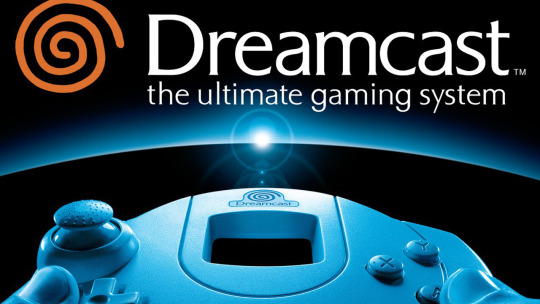
I hated middle school. There’s a whole swath of memories I’d rather do without as far as the years 1999 through 2002 are concerned. There is, however, one memory I hold near and dear to my heart during this time frame. After reading about it in magazines and being really excited for it, my mother took me to Toys’R’Us one evening to get me a Sega Dreamcast. We brought that puppy home with a copy of Sonic Adventure, hooked it up, fired it up, and took it all in. As the opening cinematic played on my TV, Mum said “It’s like playing a movie!”
Boy, if we only knew what games would go on to look like now.
The Dreamcast was, and to this day remains, my all time favorite console. It’s the swan song of a company that was perhaps a bit too ambitious for its own good, a marvel of gaming technology many years ahead of its time, and home to some of the best and most unique games to ever come out.
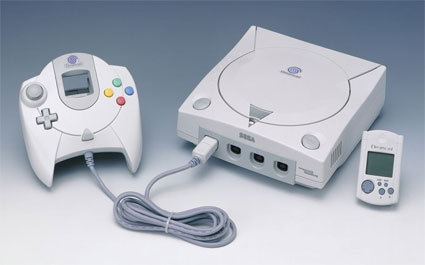
At the time of its release, the Dreamcast was the most graphically powerful console on the market. Sony’s Playstation boasted 32-bit graphics, and the Nintendo 64 had double that, at -wait for it- 64 bits. Dreamcast had double of that: 128 bits of beautiful graphics, thanks to the GD-ROM, a proprietary disc format born from squeezing every bit of memory out of a regular old CD as was physically possible, before DVDs and Blu-Ray became as ubiquitous as they are today.
Even the method of memory storage was unlike its competitors; the standard memory card for the Dreamcast was the Visual Memory Unit (VMU), a cross between a memory card and a Gameboy that let you manage data and download minigames to extend the functionality of many games. The only other thing like it that I can think of being made is Sony’s Pocketstation, and that never saw the light of day outside of Japan. You would not believe the number of button-cell batteries I burned through caring for Chao on the go.
Of course, all of the fancy tech and cool gadgets wouldn’t amount to much if the games on offer weren’t fun at all. Tiger’s Game.Com bragged of being a versatily console and handheld device, but the games for it all stank like a fragrant dog poop laying on the sidewalk on a hot Floridian summer day. Thankfully, fun games were something the Dreamcast had no shortage of, even in the brief few years that it was on the market, a slew of which I’d like to bring attention to.
Sonic Adventure 1 & 2
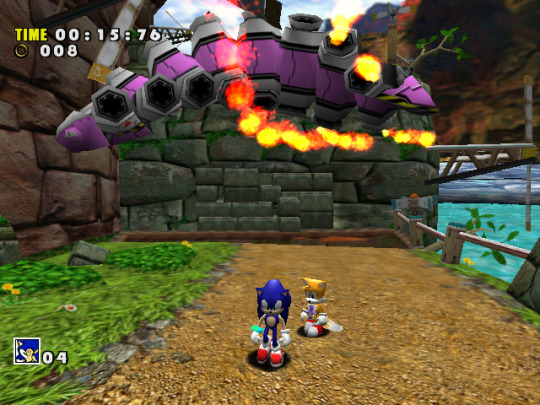
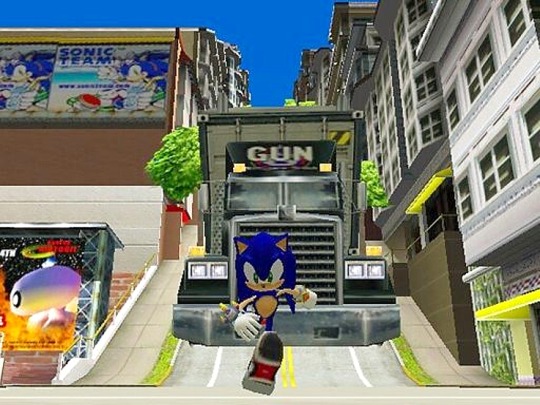
Maybe they haven’t aged as well as I’d like to think, but DAYUM if these weren’t some fun games back in the day. Sonic has always struggled with 3D, but the first attempts at true 3D Sonic games remain quite novel. The first Sonic Adventure had different play styles for each character, some of which were great (Sonic and Gamma, for me at least), others...not so much (the less said about Big, the better), in addition to, for its time, an intricate plot with each character’s story intertwining and playing out differently depending on which character you’re playing as.
Sonic Adventure 2, meanwhile, streamlined the gameplay and improved upon some of the first game’s flaws, cutting out the non-platforming related stages (aside from the treasure hunting stages, which are a touch better than in the first game). It’s story was also very compelling, being one of the darkest storylines in the entire series; government conspiracies, weapons of mass destruction, fucking murder! Maybe that’s not everyone’s cup of tea, but I think we can all agree that SA2 handled “dark and gritty” a lot better than Shadow the Hedgehog’s stand-alone game.
Both games also featured a mini-game that could prove to be just as addicting, if not more so, than the games proper: Chao Gardens. Chao were little, adorable water monsters that players could raise like virtual pets, their popularity likely owed in part to the ubiquity of other virtual pets like Tamagotchi near the end of the millennium, as well as how easy-going and casual raising a Chao was compared to a Digi-Pet that would not wait for you to clean its shit up: you can enter and leave Chao Gardens freely, and you wouldn’t have to worry of your Chao dying of neglect in your absence. There’s also very deep mechanics at work for raising Chao, with their growth and evolution depending heavily on how well you raise them, what animals you give them, and what fruits you feed them, all so you can have them participate in races. The aforementioned VMU also expanded Chao functionality considerably, letting you raise them anywhere you wanted.
Shenmue
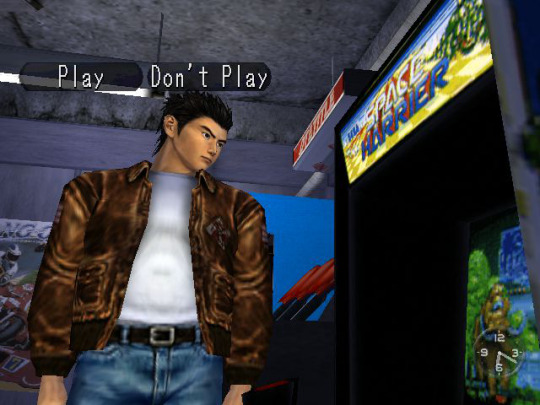
My relationship with Shenmue, these days, is very much that of a love-hate relationship. On the one hand, Shenmue popularized two aspects of gaming today that I loathe; Quick-Time Events, and over-blown game budgets (this game would’ve had to be bought by every DC owner TWICE before it could break even). On the other hand, there’s no denying that this game was a labor of love by Yu Suzuki. The attention to detail in Ryo Hazuki’s hometown of Yokosuka is staggering. Everything you can imagine can be interacted with, down to the last dresser drawer in Ryo’s house. Every resident of Yokosuka was unique from the others and had their own behaviors that they would go through, unlike every other NPC in the town, or other games for that matter. The story may be a tad formulaic, and most of the voice work left something to be desired, but the world of Shenmue was one that was very fun to explore.
Plus, this game introduced me to Space Harrier. If that’s not a good thing, you tell me what is.
Jet Set Radio
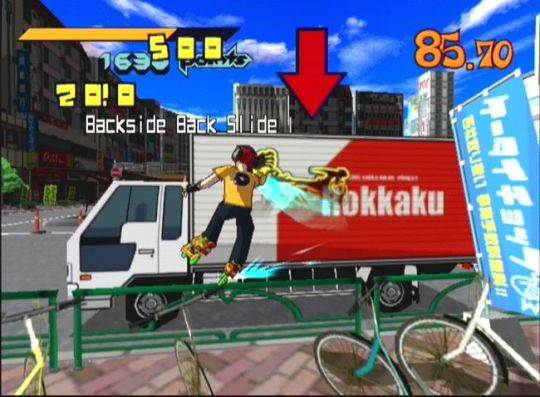
I had to convince my mother this game wouldn’t turn me into a graffiti-painting delinquent. It was a hard sell, but it paid off, and boy am I glad it did.
Jet Set Radio is very much unlike other games, then and today even. This was the game that helped to popularize cel-shaded graphics; the thick black outlines around the character models made this game look like an anime come to life, and eventually paved the way for the wicked-awesome graphics we see today from Arc System Works with Guilty Gear XRD and Dragonball FighterZ. The idea of playing a roller-blading hooligan throwing tags around the city and evading the police was also unique, and kept players on their toes as techno music accompanies their shenanigans. The game was a bit on the short side, but was challenging and fun enough that multiple playthroughs were warranted.
Making my own graffiti tags was also quite the timesink.
Phantasy Star Online
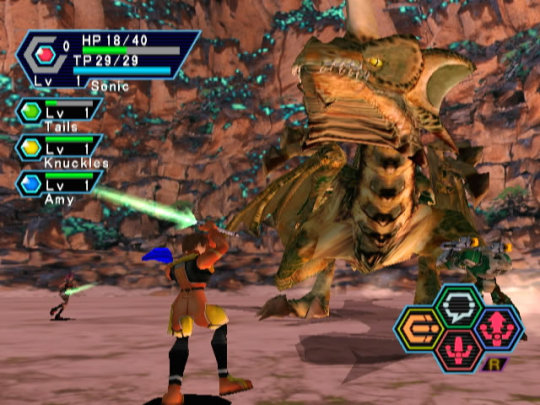
I may be a late bloomer to the Phantasy Star series, but it has become one very dear to me for helping me meet some of my closest friends (Hi, Tara!).
Phantasy Star was a series of JRPGs by Sega meant to compete with other big franchises like Final Fantasy and Dragon Quest. The original PSO, on the other hand, is an online multiplayer dungeon crawler that would change the course of the series from that point forward. As interstellar colonists investigating mysterious phenomena on an alien planet, players would delve into unique locals with characters they would create themselves to slay monsters, collect valuable items, and unravel the mysteries of the planet Ragol.
The original PSO is also very notable for its attempt to break the language barrier with a unique conversation system. While good ol’ fashioned keyboards remained in vogue, players also had the option of constructing sentences to transmit to other players in the area or party in those players’ native languages. Using this system, you could send a message saying “Help! This dragon is too powerful!”, and your friend in Japan would read it as “助けて!この龍は強すぎる!” It may not have seen much use, since players are more likely to congregate and play with those that can speak a common language fluently, but it was very kind of Sega to provide the option.
One thing that gets me straight in the feels is something from the original beta trailer for this game: “The world of Phantasy Star Online lasts for an eternity!” It is not uncommon for trailers and developers to hype games up with hyperbole (just ask Peter Molyneaux), but this is a statement that has held true for PSO! Even after the last official server for the last iteration of PSO shut down in 2008, private servers continue to run the game to this day, ensuring that the world of PSO truly remains eternal. Even with a proper sequel Phantasy Star Online 2 proving to be a pop culture staple in Japan, the original PSO remains one of the most beloved and enduring MMOs in history.
Skies of Arcadia
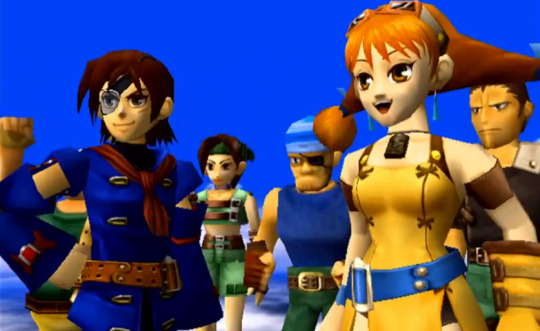
I’ve got friends who would skin my hide and leave me to hang like the Predator if I didn’t mention this.
Just about every console since the NES has a JRPG, and the Dreamcast is no exception. While Phantasy Star shifted towards MMO territory, those hoping for a sweeping single-player adventure still had Skies of Arcadia. As the daring sky pirate Vyse and his motley crew of adventurers, players fought to stop an evil empire from awakening an ancient evil while flying across a world of floating continents in a kickass airship. This game is among the most challenging JRPGs in the genre; a clever mind and strategic acumen are needed to survive battles with other pirates, monsters, and rival airships. The world of the game is also incredibly beautiful; I personally think it has much in common with Castle in the Sky, my favorite Hayao Miyazaki film. The soundtrack compliments the game incredibly, and is a joy to listen to by itself.
---
There are plenty of other games that made the Dreamcast incredible, but this article is long enough as it is, so I’ll have to give those games their proper due later. Suffice to say, though, the Dreamcast is a historical console that remains one of the most beloved in the history of the medium, not only by myself, but by hundreds of thousands of gamers the world over. It may have only been on the market for a few years, but it is said that the brightest stars are the ones that burn out the quickest.
And make no mistake, the Dreamcast is one of the brightest stars there ever was.
234 notes
·
View notes